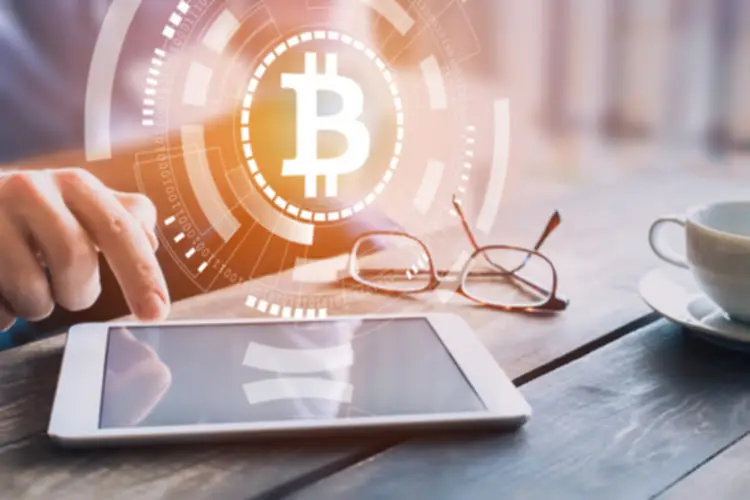L’evoluzione dell’allevamento avicolo in Italia sta attraversando un momento di profonda trasformazione, che vede l’integrazione di tecnologie innovative e approcci ludici capaci di ridefinire le pratiche tradizionali. In questo contesto, il ruolo delle nuove metodologie non solo migliora la qualità della produzione e il benessere animale, ma contribuisce anche a rafforzare il rapporto tra agricoltura, cultura e società. Per comprendere appieno questa rivoluzione, è utile partire dall’approfondimento delle tecnologie digitali adottate e del modo in cui esse si intersecano con le tendenze ludiche, creando un ponte tra innovazione e tradizione.
- L’uso delle tecnologie digitali nell’allevamento avicolo italiano
- La partecipazione dei contadini italiani alle nuove tendenze ludiche e tecnologiche
- Nuove forme di coinvolgimento e sensibilizzazione del pubblico italiano
- Impatti socio-economici dell’innovazione ludico-tecnologica
- Riflessioni sul futuro dell’allevamento avicolo in Italia
L’uso delle tecnologie digitali nell’allevamento avicolo italiano
a. Sistemi di monitoraggio e automazione per migliorare il benessere dei polli
Negli ultimi anni, l’adozione di sistemi di monitoraggio digitale ha rivoluzionato l’allevamento avicolo in Italia. Sensoristica avanzata, come telecamere e sensori ambientali, permette agli allevatori di controllare in tempo reale le condizioni climatiche, il comportamento degli animali e la salute delle squadre di polli. Questi strumenti facilitano interventi tempestivi e mirati, riducendo lo stress e migliorando il benessere animale. Ad esempio, alcune aziende agricole utilizzano sensori di movimento per individuare comportamenti anomali, indicativi di malattie o stress da sovraffollamento.
b. Applicazioni di intelligenza artificiale per ottimizzare produzione e salute
L’intelligenza artificiale (IA) sta diventando un elemento chiave nel settore avicolo italiano. Algoritmi di machine learning analizzano grandi quantità di dati provenienti da sensori e immagini per prevedere eventuali problemi sanitari o di produzione. Questo approccio consente di pianificare interventi preventivi, riducendo l’uso di antibiotici e migliorando la qualità delle carni. Alcune startup italiane stanno sviluppando app che, grazie all’IA, aiutano gli allevatori a monitorare la crescita dei polli e a pianificare le attività quotidiane, portando a una gestione più sostenibile ed efficiente.
c. La digitalizzazione come motore di innovazione culturale nell’allevamento
L’introduzione di tecnologie digitali ha favorito un cambio di paradigma culturale tra gli allevatori italiani. Non si tratta più solo di pratiche tradizionali, ma di un approccio più consapevole e innovativo, che valorizza la trasmissione di conoscenze attraverso piattaforme digitali, workshop online e reti di collaborazione internazionale. Questa digitalizzazione favorisce anche un più forte senso di appartenenza a una comunità agricola moderna, capace di integrare tradizione e progresso.
La partecipazione dei contadini italiani alle nuove tendenze ludiche e tecnologiche
a. Come i giochi interattivi influenzano la formazione e l’educazione degli allevatori
I giochi interattivi rappresentano un nuovo strumento di formazione per gli allevatori italiani, specialmente tra le giovani generazioni. Applicazioni digitali e simulazioni consentono di sperimentare scenari di allevamento, apprendere tecniche di gestione e risolvere problemi in modo coinvolgente e pratico. Attraverso il gioco, si favorisce una maggiore consapevolezza delle sfide quotidiane, stimolando l’innovazione e la capacità di adattamento.
b. La cultura della tradizione e il suo rapporto con le innovazioni moderne
Nonostante l’avanzamento tecnologico, la cultura rurale italiana conserva un forte legame con le tradizioni. Tuttavia, molti allevatori trovano nelle innovazioni digitali e ludiche un modo per valorizzare e trasmettere il patrimonio rurale alle nuove generazioni. Ad esempio, alcune iniziative integrano giochi che riproducono antiche pratiche di allevamento, reinterpretandole con strumenti digitali per mantenere viva la memoria storica e adattarla alle esigenze contemporanee.
c. Testimonianze di allevatori che integrano il gioco e la tecnologia nelle pratiche quotidiane
Numerosi allevatori italiani testimoniano come l’uso combinato di tecnologia e gioco abbia migliorato significativamente la gestione delle aziende. Marco, un allevatore toscano, racconta di aver introdotto un sistema di monitoraggio digitale e di aver sviluppato un’app educativa per i suoi figli, coinvolgendoli nelle attività quotidiane e trasmettendo così valori di innovazione e rispetto per la tradizione. Questi esempi concreti evidenziano come il connubio tra gioco e tecnologia possa essere un motore di rinnovamento culturale e pratico.
Nuove forme di coinvolgimento e sensibilizzazione del pubblico italiano
a. Eventi e mostre che uniscono ludico e agricolo per promuovere l’allevamento sostenibile
In molte città italiane si stanno organizzando eventi e fiere che combinano aspetti ludici e agricoli, come mostre di giochi digitali dedicati all’allevamento e laboratori pratici sulla sostenibilità. Queste iniziative coinvolgono cittadini di tutte le età, contribuendo a diffondere una cultura più consapevole e rispettosa del patrimonio rurale. Attraverso esperienze interattive, il pubblico può scoprire il valore della produzione avicola italiana e il ruolo di innovazioni tecnologiche per un futuro sostenibile.
b. Il ruolo dei social media e dei giochi digitali nella diffusione di conoscenze sull’allevamento avicolo
I social media rappresentano oggi uno strumento potente per sensibilizzare e coinvolgere un pubblico più vasto. Campagne di sensibilizzazione, video tutorial e giochi digitali dedicati all’allevamento avicolo permettono di raggiungere studenti, famiglie e appassionati, promuovendo pratiche sostenibili e innovative. Ad esempio, alcune piattaforme online offrono giochi che simulano la gestione di un allevamento, incentivando l’apprendimento attraverso il divertimento.
c. Progetti educativi nelle scuole italiane che uniscono gioco e cultura rurale
Le istituzioni scolastiche italiane stanno sempre più integrando progetti educativi che combinano gioco e cultura rurale, con l’obiettivo di avvicinare i giovani alle tradizioni agricole e alle pratiche sostenibili. Attraverso laboratori, giochi interattivi e visite in aziende agricole innovative, si stimola l’interesse per l’allevamento e si promuove un atteggiamento responsabile verso l’ambiente. Questi interventi rappresentano un passo importante per mantenere viva la memoria storica e favorire una nuova generazione di allevatori consapevoli.
Impatti socio-economici dell’innovazione ludico-tecnologica nell’allevamento
a. Creazione di nuove opportunità di lavoro e formazione specializzata
L’introduzione di tecnologie avanzate e metodologie ludiche ha aperto nuove prospettive occupazionali nel settore avicolo italiano. Si stanno sviluppando figure professionali specializzate in gestione digitale, analisi dei dati e sviluppo di applicazioni educative, contribuendo alla crescita di un’economia rurale più dinamica. La formazione di giovani e adulti in queste nuove competenze rappresenta un investimento strategico per il futuro del settore.
b. La valorizzazione del patrimonio rurale attraverso il gioco e la tecnologia
Attraverso iniziative di digital storytelling, giochi educativi e piattaforme di condivisione, il patrimonio rurale italiano viene valorizzato e trasmesso alle nuove generazioni. Questi strumenti favoriscono la consapevolezza del valore culturale e ambientale delle pratiche agricole, contribuendo a un’immagine più positiva e moderna dell’allevamento.
c. Sfide e opportunità per le piccole e medie aziende agricole italiane
Per le piccole e medie aziende agricole, l’adozione di innovazioni ludico-tecnologiche rappresenta sia una sfida che un’opportunità. Da un lato, richiede investimenti e formazione, dall’altro permette di differenziarsi sul mercato, attrarre nuovi clienti e rafforzare il rapporto con la comunità locale. La chiave del successo risiede nella capacità di integrare tradizione e innovazione, creando un modello di allevamento resiliente e sostenibile.
Riflessioni sul futuro dell’allevamento avicolo in Italia
a. Come l’innovazione e il gioco possono contribuire alla sostenibilità ambientale
L’uso di tecnologie intelligenti e approcci ludici favorisce pratiche di allevamento più sostenibili, riducendo l’impatto ambientale attraverso ottimizzazione delle risorse e gestione più efficiente. La digitalizzazione permette di monitorare in modo preciso i consumi energetici e idrici, minimizzando gli sprechi e promuovendo un modello di agricoltura più rispettoso dell’ambiente.
b. L’influenza delle tendenze internazionali sulla cultura agricola italiana
Le innovazioni globali, come l’agricoltura 4.0 e i giochi educativi digitali, stanno influenzando le pratiche agricole italiane, portando a una maggiore apertura verso modelli sostenibili e smart. La capacità di adattare queste tendenze alle specificità del contesto locale rappresenta una sfida fondamentale per mantenere alta la qualità e l’identità del settore avicolo italiano.
c. Ricollegamento al tema originale: il ruolo della velocità e del fascino dei giochi moderni nel plasmare il futuro dell’allevamento
Come abbiamo visto nel nostro approfondimento, il fascino dei giochi moderni, unito alla velocità e all’innovazione tecnologica, può rappresentare una leva strategica per rendere l’allevamento avicolo più attrattivo, sostenibile e resiliente. La capacità di integrare queste dinamiche nel settore è fondamentale per costruire un futuro in cui tradizione e progresso si incontrano armoniosamente, promuovendo un’Italia agricola sempre più innovativa e rispettosa dell’ambiente.
Per ulteriori approfondimenti su questo affascinante tema, può tornare a leggere l’articolo originale La velocità dei polli domestici e il fascino dei giochi moderni, che introduce i concetti fondamentali di questa rivoluzione culturale e tecnologica.




